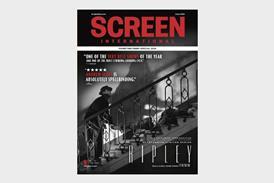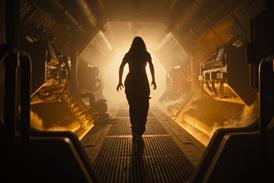Naoko Yamada’s ’strikingly-lovely’ 2D animation is centred around three high school misfits who decide to form a band

Dir: Naoko Yamada. Japan. 2024. 101mins
Three Japanese teenage misfits find friendship and a creative outlet when they form a band together. Tonsuko (voiced by Sayu Suzukawa) is a saintly space cadet who sees the world a little differently. Kimi (Akari Takaishi) is a high school dropout who can’t admit to her grandmother that she has flunked her education. And Rui (Taisei Kido) is the dorky introvert who is being pushed into a career in medicine. The latest film from A Silent Voice director Naoko Yamada, The Colours Within is a strikingly lovely piece of 2D animation. It’s as sweet as its candy-store colour palette, but there’s emotional nourishment in the film’s delicate handling of teen angst and loneliness.
A charmer of a movie
Yamada has already demonstrated a gift for tapping into the dynamics of adolescent outsiders and for telling the stories of young people who don’t quite fit into the high school landscape – A Silent Voice dealt with disability and bullying. And she is also well-versed in stories that explore the unifying power of music: The Colours Within follows her 2018 feature, Liz And The Blue Bird, which explored the friendship between two final year students who are members of the school’s brass ensemble, and the series K-On!, about an all-girl high school rock band.
Drawing on and deepening previous themes in Yamada’s work, The Colors Within, which premieres at Annecy, is a charmer of a movie, pulling off the tricky balance of being disarmingly cute and adorable without losing touch with the bewildering, gnawing ache of being a teen. Toho will release in Japan on August 30, while Gkids holds the rights for North America, Latin America, Australia and New Zealand and Anime Ltd. has picked the film up for the United Kingdom, Ireland, and all of Europe where an end-of-year release is planned.
Yamada’s work is distinctive for its dreamy aesthetic, its use of colour and impressionistic flourishes: all of which makes her particularly well-suited to tell a story through the eyes of a character like Tonsuko. She is not like the other girls at her Catholic boarding school. Tonsuko has synesthesia, a condition which, in her case, means that she sees people as colours. It’s something that she doesn’t talk about but that, like most things in her life, the pious and relentlessly positive Tonsuko regards as a gift – even when she is floored by a volleyball because she is so distracted by a fellow player’s shimmering cobalt blue aura.
That luminous, soulful blue belongs to Kimi, and it’s the most beautiful colour that Tonsuko has ever ‘felt’ (her synesthetic perception of colours is, she explains in a voiceover, not a fully visual experience). All of which gives Yamada and her animation team free reign to create something playful, experimental and arrestingly gorgeous as a window into Tonsuko’s unique perception of the world around her.
Shortly after the basketball incident, Kimi, hitherto an honours student and the leader of the school choir, stops attending classes. Rumours abound – she talked back to a nun, she had a secret boyfriend – but nobody seems to know why she left, only that she is now working in a bookstore somewhere in the city (the film is set in and around Nagasaki). Fascinated by Kimi’s colour, Tonsuko sets out to find her – and she does so at the point when gauche music nerd Rui strikes up a conversation, Kimi’s guitar being the icebreaker. Stumbling, stuttering and paralysed by social anxiety, the three somehow agree to start a band together. Rehearsals in an abandoned church on an island are an immediate success, and the kids discover a newfound eloquence and means of expression through music.
The screenplay hints at but doesn’t dwell on the respective family pressures that shape the three – in Tonsuko’s case the sparse backstory is one of the film’s missed opportunities. She seems closer in spirit to the schools’ cool nun, Sister Hiyoko (Yui Aragati) than she is to her mother, who we see only briefly.
If religious faith is a theme that is threaded through the story, so is the idea of music as an embrace of the many possibilities of the world. And the film’s eclectic score reflects that, as more conventional piano melodies give way to a range of quirky instruments (Rui plays a theremin, at one point there’s a montage set to what sounds like Underworld’s ’Born Slippy’ played on a glockenspiel). And the film’s musical climax, at the school’s Valentine’s Day concert, features a lyrically bewildering but infectiously upbeat number composed by Tonsuko, which is so irrepressibly perky it has the nuns jiving in the aisles.
Production companies: Story Inc, Science Saru Inc
International sales: Charades sales@charades.eu
Producers: Yoshihiro Furusawa, Genki Kawamura, Eunyoung Choi, Wakana Okamura, Kohei Sakita
Screenplay: Reiko Yoshida
Art direction: Midori Shimada Yuuna Murooka
Animation: Takashi Kojima
Editing: Kiyoshi Hirose
Music: Kensuke Ushio
Main cast: Sayu Suzukawa, Akari Takaishi, Taisei Kido, Yasuko, Keiko Toda, Yui Aragaki























